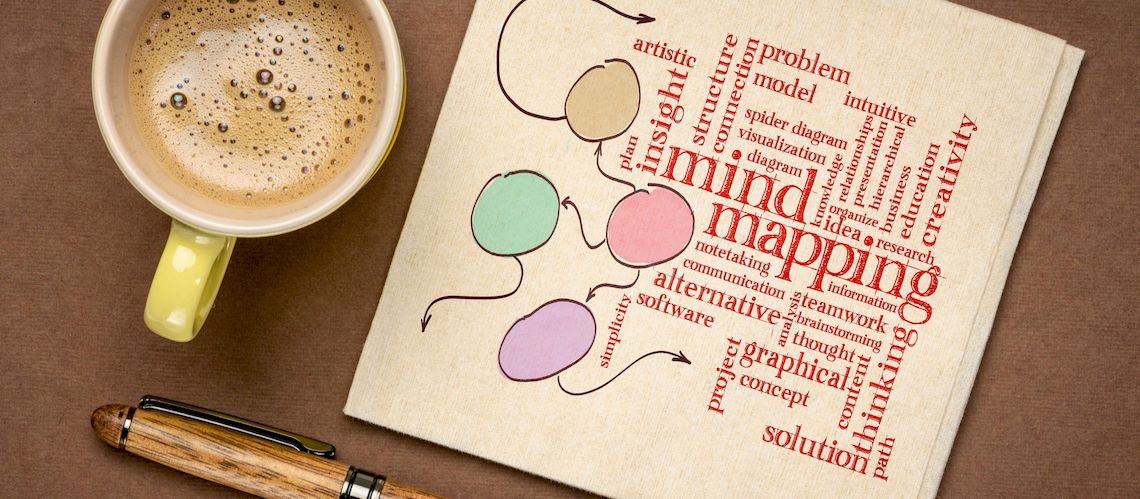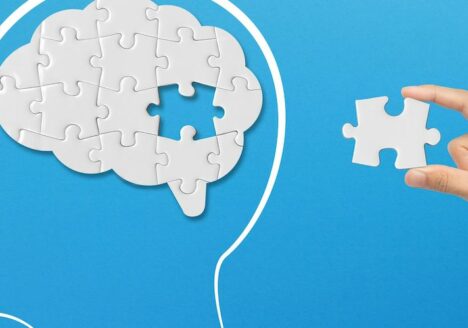Within the CORE Compass Framework, mind mapping is a versatile and transformative tool that supports Curiosity, Cognitive Growth, Resilience, and Operational Vitality. As a visual organization technique, it enhances creativity, improves memory, and promotes efficient information processing. These qualities make mind mapping a foundational practice for achieving balance and fulfillment in life.
Application in the CORE Compass Framework
Curiosity and Cognitive Growth
Mind mapping aligns perfectly with the CORE Compass’s focus on intellectual curiosity and lifelong learning. By visually connecting ideas, it enables individuals to explore patterns, uncover relationships, and generate innovative solutions. For instance, students mapping out connections between historical events or scientific concepts often report deeper understanding and greater engagement in their studies (Shi et al., 2023).
Radiant thinking—a core principle of mind mapping—mirrors how the brain naturally organizes ideas. This process not only strengthens critical thinking but also fosters a mindset geared toward exploration and intellectual expansion (Buzan et al., 2010).
Resilience and Emotional Equilibrium
Mind mapping promotes clarity and reduces mental clutter, both of which are essential for emotional balance. By organizing thoughts visually, individuals can identify stressors, map out solutions, and regain a sense of control over their challenges. Research by Liu et al. (2014) underscores that mind mapping reduces stress by providing structure and direction, making it an effective tool for emotional resilience.
For example, during high-stress scenarios like preparing for an important presentation, creating a mind map of key points and supporting ideas can provide reassurance and clarity, helping to reduce anxiety and boost confidence.
Operational and Physical Vitality
Effective organization and planning through mind mapping enhance productivity and time management, directly impacting operational vitality. By breaking tasks into actionable steps and visualizing priorities, individuals can streamline workflows and maintain a balanced schedule (Mento et al., 1999). These benefits extend to physical vitality, as improved organization reduces mental strain, freeing up energy for activities like fitness and self-care.
Consider a fitness enthusiast who uses mind mapping to track their workout plans, nutritional goals, and progress. By mapping out their regimen, they gain a clear, motivating overview of their health journey. Similarly, individuals can use mind mapping to structure relaxation routines or recovery plans, ensuring their physical well-being remains a priority.
Benefits of Mind Mapping in the CORE Compass
Mind mapping delivers profound benefits across the CORE Compass Framework:
- Improved Creativity and Problem-Solving Skills
Mind maps encourage non-linear thinking, enabling users to brainstorm freely and approach problems from multiple angles. This makes them particularly effective for generating innovative solutions (Mento et al., 1999). - Enhanced Memory and Information Retention
By combining visual and hierarchical structures, mind mapping significantly improves retention of complex information. Research shows that students using mind maps outperform peers using linear note-taking methods in comprehension and recall (Shi et al., 2023). - Greater Clarity and Focus
Visually organizing thoughts reduces overwhelm and provides a clear framework for tackling challenges. This clarity enhances both decision-making and task prioritization (Liu et al., 2014). - Efficient Organization of Ideas and Tasks
Mind maps allow users to categorize, prioritize, and execute tasks effectively, supporting a more balanced and fulfilling life (Batdi, 2015).
Integrating Mind Mapping in the CORE Compass
To maximize the benefits of mind mapping, integrate it thoughtfully within your CORE Compass practices:
1. Education
Learn the foundational principles and techniques of mind mapping. Tony Buzan emphasizes the importance of radiant thinking, the use of keywords, and incorporating visual elements like colors and images to make maps more engaging and effective (Buzan et al., 2010).
2. Implementation
Incorporate mind mapping into daily routines to support cognitive growth, emotional resilience, and productivity:
- Problem Solving: Break down challenges into manageable components and map out potential solutions.
- Planning and Organization: Use mind maps to visualize tasks and prioritize effectively.
- Learning: Create maps to connect concepts and improve retention of new material.
3. Monitoring
Regularly evaluate your progress with mind mapping and adjust your techniques as needed. For example, keep a journal of your mind maps to assess their effectiveness in different areas of life. Reflect on which techniques or visual elements (e.g., keywords, colors) resonate most and refine your approach accordingly (Liu et al., 2014). This iterative process ensures continuous improvement and alignment with your goals.
Practical Examples of Mind Mapping in CORE Compass
- Curiosity and Learning: A college student preparing for exams uses mind mapping to connect historical events, identify underlying patterns, and review key dates and themes. This approach not only improves retention but also makes studying more engaging (Shi et al., 2023).
- Resilience and Clarity: A professional managing a complex project creates a mind map to outline tasks, dependencies, and deadlines. The clarity provided by the map reduces stress and enables smoother execution (Mento et al., 1999).
- Operational Efficiency: A fitness enthusiast visualizes their workout routines and dietary plans through mind mapping, tracking their progress and staying motivated. They also use it to design recovery and relaxation schedules, ensuring a holistic approach to health (Batdi, 2015).
Conclusion
Mind mapping is not merely a tool—it’s a transformative practice that empowers individuals to unlock their potential across all dimensions of the CORE Compass Framework. By visually organizing thoughts and ideas, it fosters creativity, enhances memory, and supports emotional resilience and productivity.
Imagine a life where your ideas flow effortlessly, your goals are always within reach, and your path is clear. Mind mapping can make this vision a reality. Start today and discover how this powerful technique can elevate your cognitive and emotional well-being, helping you achieve true balance and fulfillment.
References:
Batdi, V. (2015) ‘A meta-analysis study of mind mapping techniques and traditional learning methods’, The Anthropologist, 20(1–2), pp. 62–68.
Buzan, T., Buzan, B. and Harrison, J. (2010) The Mind Map Book: Unlock Your Creativity, Boost Your Memory, Change Your Life. 1st edn. New York, NY: Pearson BBC Active.
Liu, Y., Zhao, Y., Zheng, J. and Liu, Z. (2014) ‘The effect of mind mapping on teaching and learning’, Proceedings of the 2014 International Conference on Education Technology and Science, pp. 1–9.
Mento, A. J., Martinelli, P. and Jones, R. M. (1999) ‘Mind mapping in executive education: applications and outcomes’, Journal of Management Development, 18(4), pp. 390–416.
Shi, Y., Xie, C. and Wei, Y. (2023) ‘Effects of mind mapping-based instruction on student cognitive learning outcomes: a meta-analysis’, Asia Pacific Education Review, 24(3), pp. 303–317.




